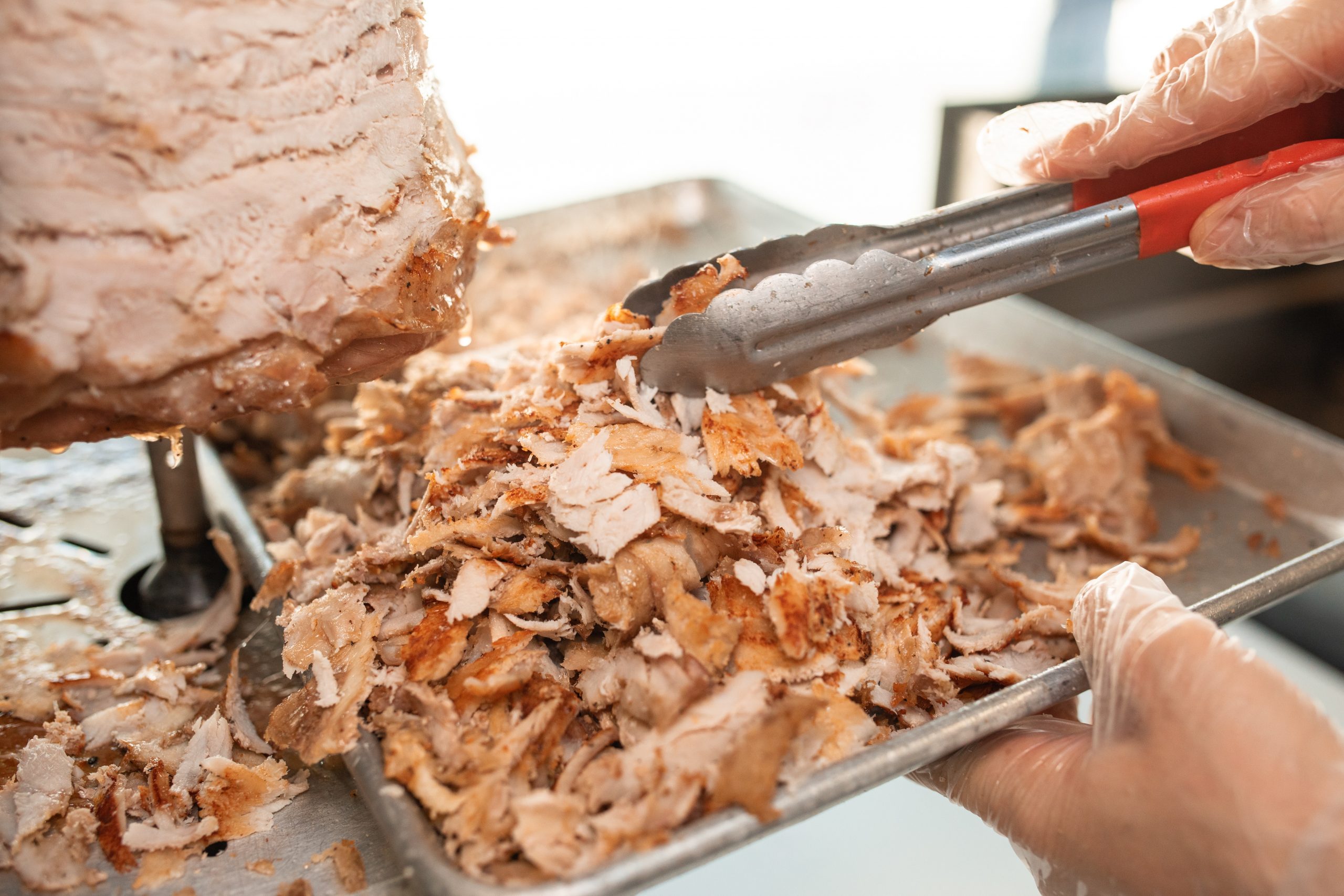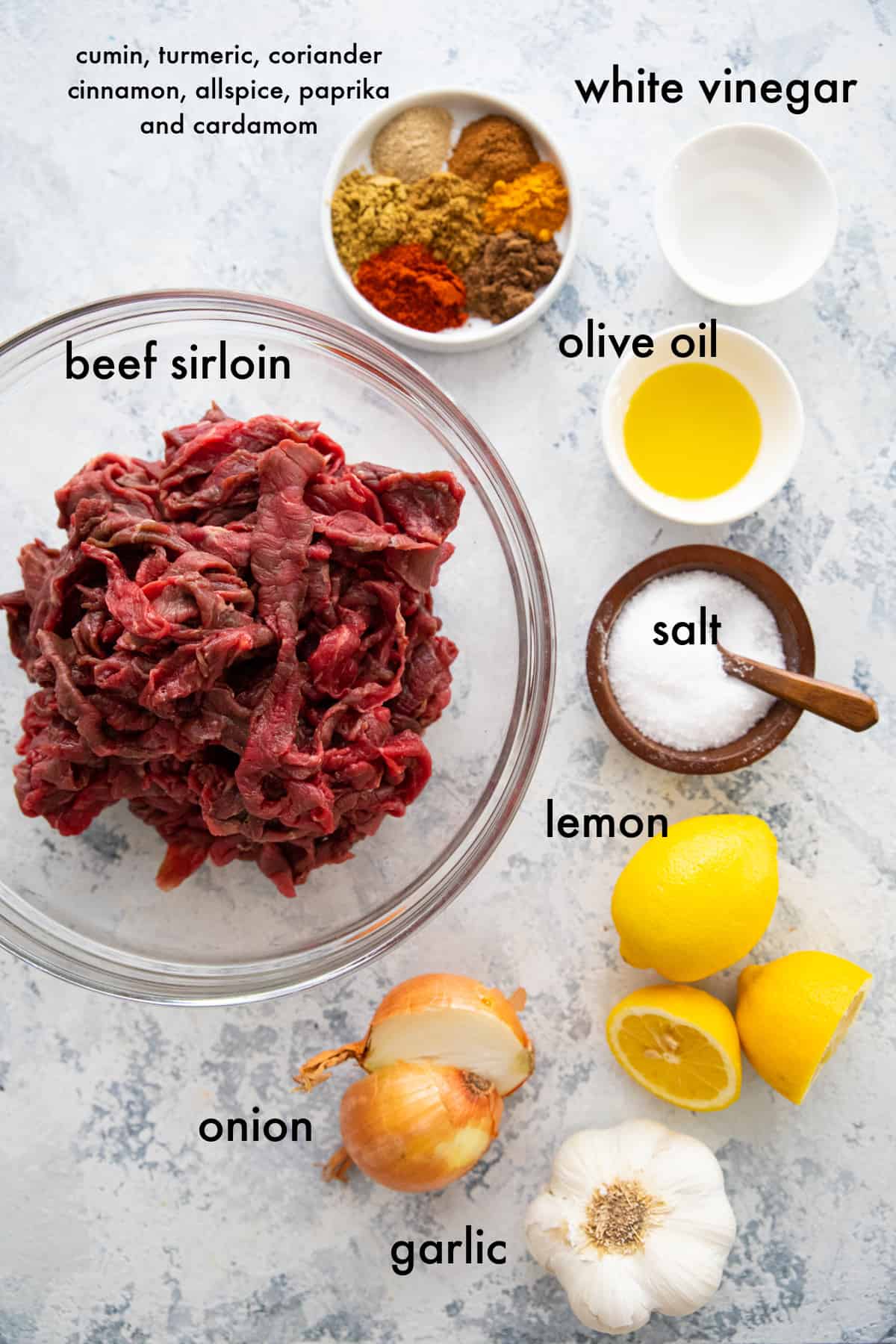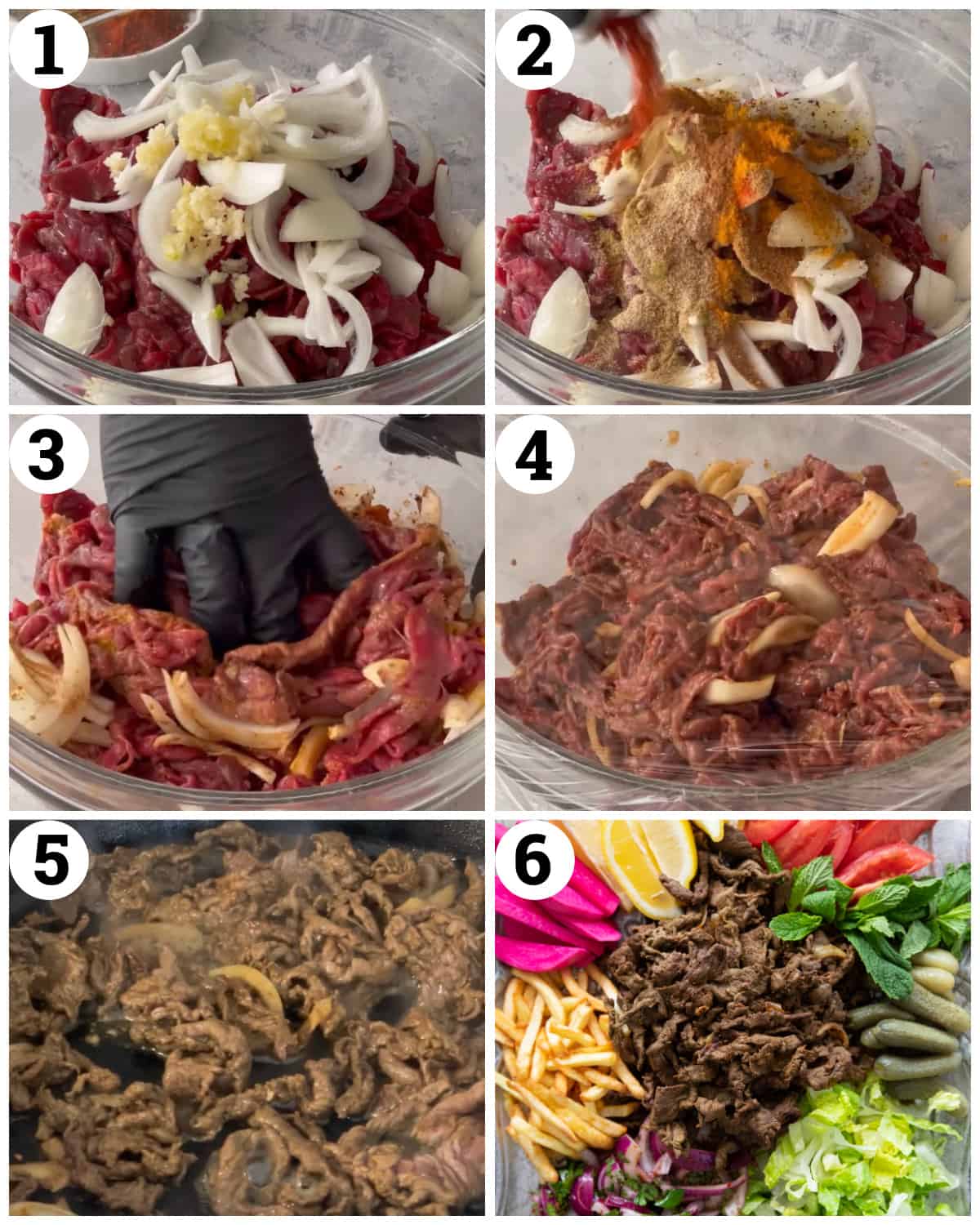Beef shawarma has become an iconic street food around the world, but what exactly is it? This flavorful Middle Eastern specialty consists of thin slices of marinated beef stacked and slow-cooked on a rotating vertical spit. The tangy, tender meat is then served in a pita or wrap along with a variety of toppings and sauces. In this article, we’ll explore the history, preparation, and popularity of beef shawarma to give you a deeper understanding of this globally loved dish.
A Brief History of Shawarma
The origins of shawarma can be traced back to 19th century Ottoman Turkey, where the Turkish version called döner kebab was invented At the time, vertical rotisseries were used to cook stacked slices of lamb and goat meat basted in oils and spices as they turned As Turkish immigrants spread across Europe and the Middle East in the early 20th century, they brought doner kebab with them. Each region then customized the dish by using different meats like chicken and beef as cheaper alternatives to lamb.
The shawarma we know today likely evolved in the bustling city streets of the Levant region including cities like Beirut Damascus, and Tel Aviv. Vendors sliced meat from a rotating spit to serve in a folded pita for a satisfying and portable street food. The combination of chicken and beef emerged as a popular shawarma meat choice, blending cost effectiveness with flavor.
How Traditional Beef Shawarma is Prepared
Authentic beef shawarma is made using a specific process:
-
Meat Selection: Thin slices of beef sirloin or other cuts like flap steak are stacked onto a tall vertical rotisserie spit.
-
Marination: The meat is marinated for a prolonged period in a blend of oils, lemon juice, garlic, and Middle Eastern spices like cumin, cardamom, turmeric, coriander, and pepper.
-
Rotisserie Cooking: The spit is placed next to a heat source and rotated at a steady pace. The meat is basted with its juices and marinade as it cooks for hours until fully tenderized.
-
Slicing: Once the outer surface of meat is cooked through, thin shavings are sliced off the rotating spit to order.
-
Serving: Hot slices of beef shawarma are stuffed into a warm pita or wrap along with toppings and tahini sauce.
This specialized process gives shawarma its signature taste and texture. The slow roasting tenderizes the meat fully while the spices and marinade deeply season it.
How to Make Beef Shawarma at Home
You don’t need fancy equipment to make tasty beef shawarma at home. With just a few simple steps, you can recreate the flavors:
-
Use lean beef like flap steak or sirloin, sliced thinly across the grain.
-
Make a marinade with olive oil, lemon juice, garlic, and spices like cumin, paprika, allspice, and cardamom.
-
Toss the beef in the marinade to coat. Let it sit for 1-2 hours.
-
Cook the meat in a skillet over high heat until just cooked through, about 8-10 minutes.
-
Stuff the hot beef into a warmed pita or flatbread along with toppings like tomatoes, onions, and tahini sauce.
While not exactly the same as rotisserie beef, this quick stovetop method captures the classic shawarma essence.
Popular Toppings and Sauces for Beef Shawarma
The marinated meat may be the star, but toppings and sauces also play a key role in shawarma enjoyment. Typical garnishes provide cool contrast and extra flavor:
-
Tahini Sauce: A creamy sesame seed paste sauce adds a touch of richness.
-
Hummus: The smooth chickpea dip complements the smoky grilled meat.
-
Tomatoes: Diced tomatoes lend brightness and moisture.
-
Onions: Sliced raw onions give crunchy pungency.
-
Pickles: Quick pickled turnips or cucumbers offer tangy bites.
-
Hot Sauce: Harissa, sriracha, or chili sauce brings welcomed heat.
-
Parsley: Fresh parsley adds herbal notes and color.
Don’t be afraid to customize your beef shawarma with toppings you love like feta, olives, or avocado.
Other Shawarma Meat Options
While beef is classic, chicken is likely the most popular shawarma meat worldwide for its mild flavor, low cost, and availability. Lamb and goat also make authentic choices that replicate the origin döner kebab. Turkey and veal lend a leaner, lighter taste. No matter the protein, rotating spit cooking remains key.
Why Beef Shawarma Became a Global Hit
Several factors helped shawarma expand from street food obscurity into a worldwide phenomenon:
- Growing popularity of Middle Eastern cuisine
- The addictive medley of textures and flavors
- Satisfying as a quick, on-the-go meal
- Ability to customize with countless sauces and toppings
- High protein and relatively low fat content
Much like gyros, tacos, and banh mi, shawarma has proven itself as a flexible and craveable ethnic food.
Is Shawarma Healthy?
When prepared properly, beef shawarma can be a nutritious meal:
- Lean cuts of beef provide quality protein.
- Load up on fiber and nutrients with veggie toppings.
- Use whole grain pita over white for extra vitamins.
- Tahini and yogurt sauces add protein, calcium, and probiotics.
- Portion control is key – stick to a single sandwich.
To make it healthier, opt for grilled meat over fried, load up on produce, and avoid fatty extras like fries or baklava.
The Defining Traits of Genuine Shawarma
To summarize, here are the key points that characterize real-deal beef shawarma:
- Thin slices of marinated beef cooked on a vertical rotisserie
- Originated in the Middle East but now a global favorite
- Tantalizing blend of aromatic spices and smoky meat
- Topped with tahini, veggies, and pickles in a warm flatbread
- Highly customizable as a sandwich or rice bowl option
- Also easily adapted at home in a skillet using quick marinade
With its irresistible medley of flavors, textures, aromas, and visual appeal, it’s easy to see why shawarma has earned its place among the most craved ethnic street foods worldwide.
So next time you see beef shawarma on a menu or food truck, don’t hesitate to order it. This Middle Eastern specialty offers an exciting culinary experience you won’t soon forget.

What Cut of Beef Should I Use?
There are different cuts of beef including flank steak, skirt steak, sirloin, sirloin tip or ribeye that you can use for this recipe. It’s best if there is some marbling in the meat, this would result in juicier shawarma.
You don’t have to splurge on any special cut of meat to make shawarma. It’s important to cut the beef into thin slices before marinating. To slice the beef easily, put it in the freezer for 20 minutes.

How To Make Beef Shawarma

- Place the thinly sliced beef in a large bowl. Add the sliced onion, minced garlic, lemon juice, vinegar and olive oil.
- Season with the shawarma spice mix and toss the beef to make sure all pieces are well coated. You can use your hands or a pair of tongs to mix the beef with the seasoning.
- Cover with a plastic wrap and marinate for 1 to 2 hours.
- When you’re ready to cook, heat a wide cast iron skillet or nonstick skillet over medium high heat. Transfer the beef to the pan and sear until fully cooked, about 8 to 12 minutes. If your pan is not large enough, cook the beef in batches.
- Make the tahini sauce and then prepare the beef shawarma sandwiches or bowls.
Lebanese Style Beef SHAWARMA & Tahini Sauce
FAQ
What is shawarma meat made of?
Shawarma is prepared from thin cuts of seasoned and marinated lamb, mutton, veal, beef, chicken, or turkey. The slices are stacked on a skewer about 60 cm (20 in) high. Pieces of fat may be added to the stack to provide extra juiciness and flavour.
What is the difference between beef shawarma and gyro?
Shawarma is typically made with Middle Eastern spices such as cumin, coriander, and turmeric, while gyro is made with Greek spices such as oregano, thyme, and rosemary. Additionally, shawarma is typically made with chicken, beef, or lamb, while gyro is made with beef and lamb.
What does beef shawarma taste like?
Flavor Profile: Beef shawarma is robust and savory, with a complex blend of spices. The slow-cooking process allows the beef to absorb the flavors deeply, resulting in a rich taste that’s both satisfying and flavorful.
Is beef shawarma healthy?
Conclusion. In conclusion, shawarma can be a healthy and satisfying meal choice when approached with a mindful eye on its nutritional components. By opting for lean meats, increasing vegetable intake, using whole-grain bread, and preparing homemade sauces, you can enjoy a nutritious version of this beloved dish.
What is beef shawarma?
Beef shawarma is a famous Middle Eastern street food made with beef that is heavily marinated in oil, lemon juice, and warm spices. It is then placed on a vertical rotisserie or spit and slow-roasted for days until it is unbelievably tender.
What kind of meat is used to make shawarma?
Several kinds of meat can be used to make shawarma at home. In this recipe, I used 1 1/2 pounds of beef flap steak, which is a thin, relatively lean steak that is part of the sirloin butt. Depending on where you live, flap steak goes by other names like sirloin tip or bavette. It is not an expensive cut of beef and has just enough fat for flavor.
Is shawarma a popular street food?
Shawarma is a popular street food in the Middle East. You can find beef, chicken, lamb shawarma, or a combination, but it is all about the spice mix to give it authentic Middle Eastern flavors. Learn how to make homemade shawarma seasoning and use it to make the best homemade beef shawarma recipe.
What cuts of beef do you use to make shawarma?
There are different cuts of beef including flank steak, skirt steak, sirloin, sirloin tip or ribeye that you can use for this recipe. It’s best if there is some marbling in the meat, this would result in juicier shawarma. You don’t have to splurge on any special cut of meat to make shawarma.
How do you serve beef shawarma?
There are so many ways to serve beef shawarma. You can make it into a shawarma wrap, a bowl or a platter. Make sure to have plenty of toum (Lebanese garlic sauce) and tahini sauce, you can use my Middle Eastern tahini sauce recipe or the one added to the recipe card below.
Is shawarma a Middle Eastern food?
Shawarma is probably one of the most recognizable Middle Eastern ethnic food names in the West, behind Falafel and Hummus. The name comes from the Turkish word çevirme which means “turning,” and where you have some deeply marinated layers of beef, lamb or chicken stacked on a vertical spit and slowly turning against a soft grilling fire for hours.
